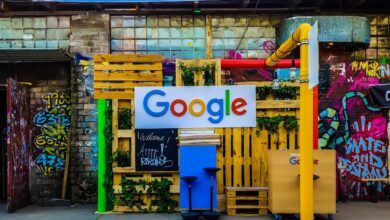Online branding
If you wind the clock back 150 years, shopkeepers would have had a much simpler time managing their brand. Despite the fact that bushrangers were rife, and the local constabularies were not always reliable, the process of marketing was pretty basic. Nailing a wooden sign to the outside of your premises was the norm, and having stencil work done or buying a listing in the local newspaper was only for the wealthy businesses.
Things are a little bit more complicated in the age of the internet, with traditional methods of getting your name out there having to be combined with strategies for boosting online awareness of your brand. In some cases, especially in the small business world, companies are completely ignoring the tried-and-tested methods of blitzing advertisements on the sides of buses, taxis, billboards, on the television, and radio waves in favor of nothing but online marketing.
“Everything has to start with the customer in terms of building a brand. Before you think about the color of your logo, or what the sign is going to look like, remember why you’re in business. Usually, this is to deliver a product or service or solve a problem. It needs to be built into and [given] to the customer. What is it they are looking for that you can answer?” says Kim McKay, director of Klick Communications.
McKay believes you should identify the emotional reasons your customers buy your products and tap into it. This enables your online branding strategy to be directly linked to the desires and expectations of your customer base.
“When you look at a visual identity, you’ve got a roadmap you’ve created, and every kind of branding and marketing decision you make need to be checked against this,” she adds.
Where on the web
Marketing your brand in an online sense comes down to how much you want to spend. Whether it’s time or money, it’s a resource that’s being consumed, so it’s important to get it right the first time. One of the biggest areas – and the cheapest – where this is becoming obvious is in the realm of social media. Whether you are blogging about what’s going on in your business in the hope that customers will become more attached, or writing witticisms on Twitter and Facebook, your brand is being put out there in every update.
“Social media is the best way for businesses to develop their brand in a cost-effective manner. It can’t be a separate strategy, it has to be part of a marketing plan. It won’t work on its own, but it’s critical,” advises McKay.
There are subtle differences in the social media networks out there. Facebook has more of a social aspect to it, given that most people will have their friends and family on their existing network. LinkedIn is great for reaching out to a more professional-oriented audience, while Twitter has given people the ability to connect with each other – and brands – like never before.
“Whether or not a brand is going to use social media, they absolutely need to register the name on all of them. It’s a gold rush out there if you don’t own your own name on YouTube or Flickr, someone else will,” adds McKay.
The biggest tip when approaching social media is to not get carried away. It’s absolutely necessary to overcome the fear of being personal in such a public arena, but it’s very simple for a journalist to quote your Twitter feed, so there’s no reason to get into a slanging match with customers or competitors.
Catriona Pollard, the owner of CP Communications, explains that the company has its own public relations (PR) blog, dedicated solely to how the business does its PR and social media.
“That is really our brand, and that’s how we are sharing it with the community. Businesses also need to think about how often they want to do that,” she explains.
“Blogging is an amazing way of being able to increase your profile online. It means that you’ll have a platform that you can dedicate to sharing your brand and its values,” continues Pollard. Blogs are really highly regarded from a search engine perspective, and it means that if you have a blog strategy, you can consistently share your key messages.
Pollard points out that it’s important to see the strategy through, as it doesn’t look great to have a Twitter profile or a blog that is never updated. If there are going to be no updates to the social media profile, and you are really just holding onto the name, it looks far better to simply have a link pointing to your actual website. Otherwise, it looks completely out of date and neglected.
“[Businesses] shouldn’t just do social media for the sake of it, and not just because their competitors are doing it,” continues Pollard. “Hopefully they’ve written a business plan and thought about who their target audience and customers are. Then [the next question] is where are my customers online? Where are they having online conversations and how can I engage with them online?”
Proof in the pudding
A lot of businesses hear about the benefits of social media – such as when Dell famously used a massive Twitter presence to generate $6.5 million in sales. Or that startup genius with thousands of Twitter followers and Facebook fans ensures a legion of voraciously loyal customers. But engaging in this space requires time, and the vast majority of small business owners are time-poor, so making the most of it is extremely important.
“Whether it’s a team of one or part of the SMB focus, just ensuring that you start monitoring the likes of Facebook and Twitter [can help]. Look for brand mentions and keywords to really get a feel of what’s happening in social media around their particular offerings and take a look at the competitors,” says Chris Gartlan, managing director of ExactTarget Australia.
That isn’t to say there isn’t any merit in the paid-for options, such as advertising on Facebook, Google AdWords, or just buying advertising on a popular site relative to your audience. These options, however, are often out of reach for small businesses that are cash-starved, and those that are not are usually already involved in them.
At the end of the day, the power of social media is in its ability to amplify the word of mouth factor in the online space. Naturally, this carries with it the risk of magnifying brand damage from negative comments, but if your business is doing all the right things in terms of customer service, this will often translate over into the digital world. There are other benefits that come from doing your own online branding, such as being more in tune with who your customers are, and what they want, which keeps you on the same page with those giving you money.





